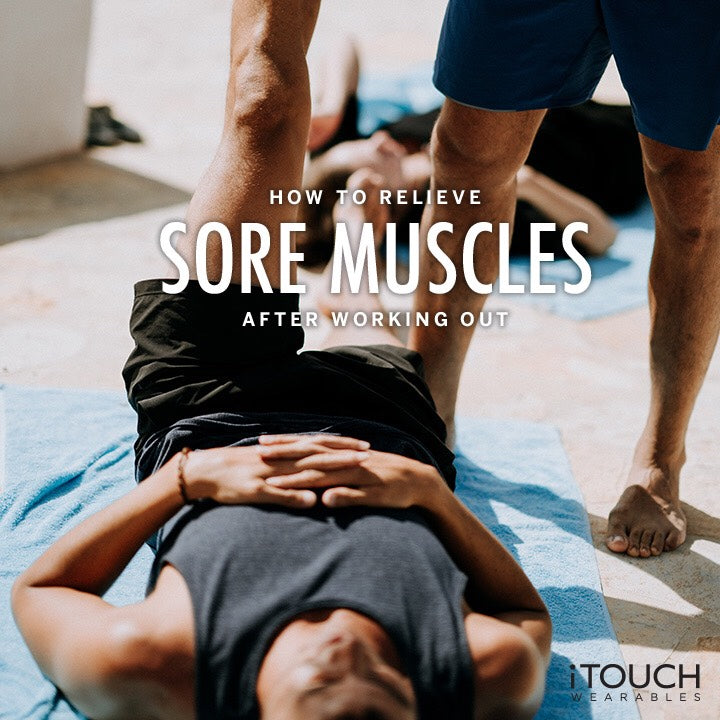
How To Relieve Sore Muscles After Working Out
You just completed a killer workout and feel amazing...until a couple of days later. It's hard to walk or even sit because you're so incredibly sore. There's actually a thing called acute muscle tightness, or delayed-onset muscle soreness (DOMS) which explains it all. Let's learn how to relieve sore muscles after working out.
Four Big Muscle Groups

Many of us workout different muscles each day, which helps prevent tightness and burnout. Nonetheless, it's also important to stretch each of these muscles daily. The four big muscle groups you should be focusing on and watching after working out are:
- Sore leg muscles
- Sore back muscles
- Sore chest muscles
- Sore arm muscles
This is the first step to relieve sore muscles after working out - recognizing them! Then you want to complete exercises and stretches that strengthen that particular muscle as it lengthens it. For example, you may want to do lunges for sore leg muscles, and yoga poses for sore back muscles. What causes these areas to ache though?
What Causes Muscle Soreness After Working Out

Typically, muscle tightness presents itself 2-3 days after a tough exercise. This results in sore muscles, a loss of range of motion in your joints, and reduced muscle strength. The actual cause is cellular changes, specifically a mechanical breakdown at the level of the cell muscle. This causes enzymes in the cell to recruit inflammatory mediators to the area, which stimulates pain receptors in the muscle cell. There's no need to worry though because there's no permanent damage to your muscles. This process actually enables the muscle to strengthen and tolerate higher loads in the future workouts. No pain no gain, right?
How To Relieve Sore Muscles After Working Out

Still when your muscles are sore, they won't perform at the level you're used to, which can increase the stress on your tendons and ligaments if you continue to exercise. Luckily, there are many ways to relieve sore muscles after working out. First off, you should back off on the intensity of your workout until you no longer feel sore or tight, or simply choose activities that don’t target the strained muscle groups. The best treatment for reducing pain is to keep it moving with light exercises and to NOT remain stagnant. Stretching, flexible training, and yoga are great routines to get into to help maintain joint range of motion. You can also try massage, ibuprofen, and ice for pain relief and muscle recovery. Bottom line is: complete your warm ups and cool downs, pay attention to your body, and let the soreness work itself out with time.
Share with us how you relieve sore muscles after working out by tagging us on Instagram @itouchwearables and Facebook @itouchwearables. Also, be sure to check out our new articles published daily!
-Gina


